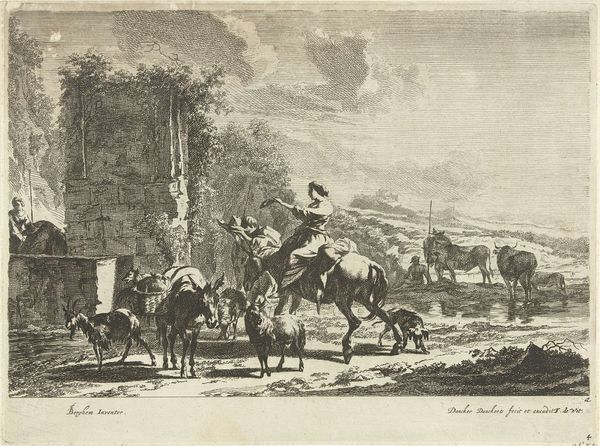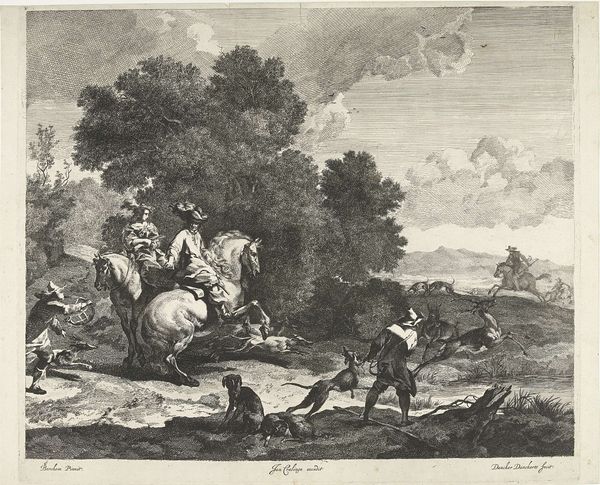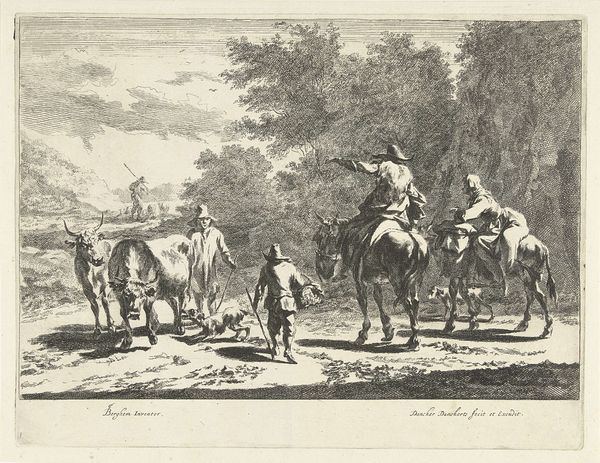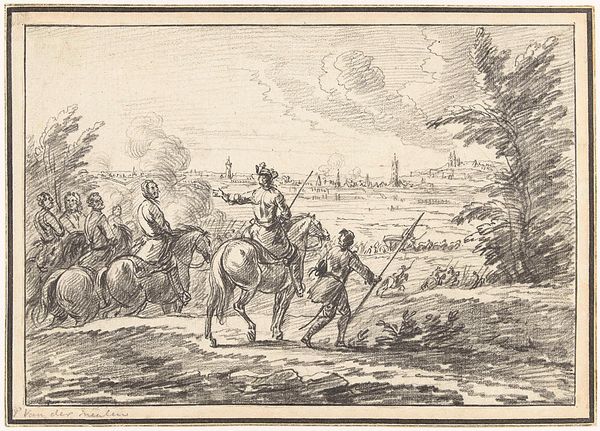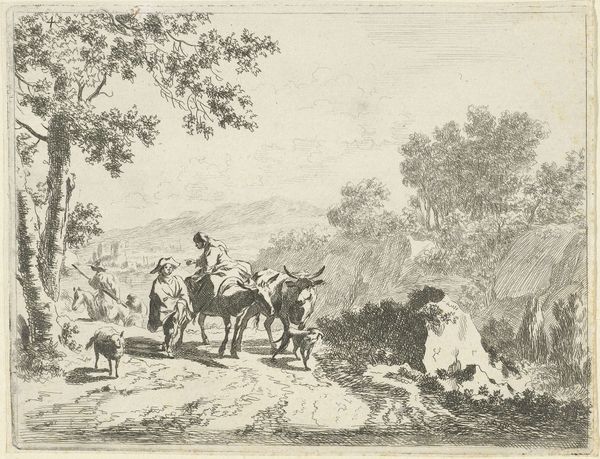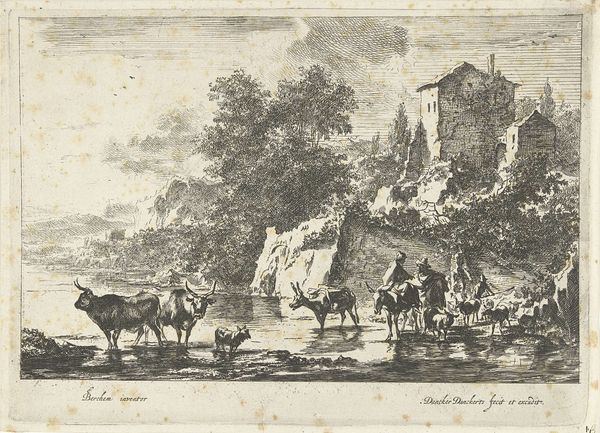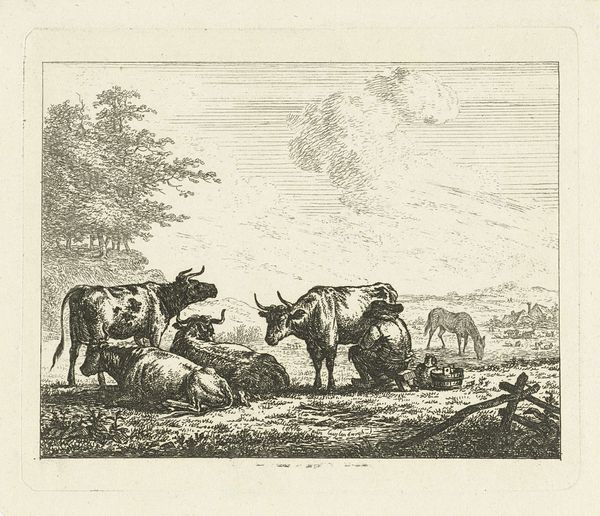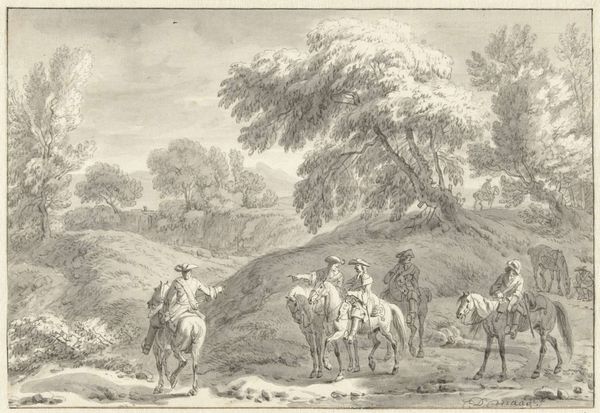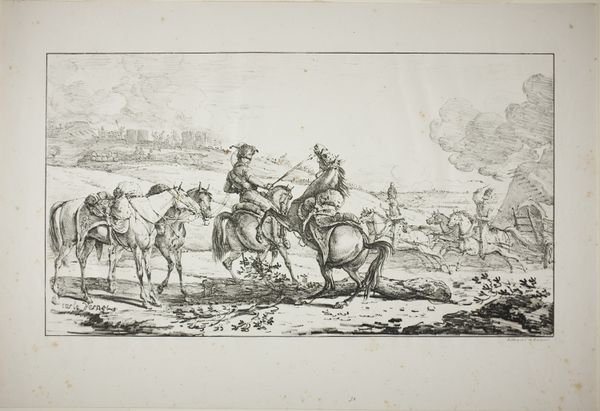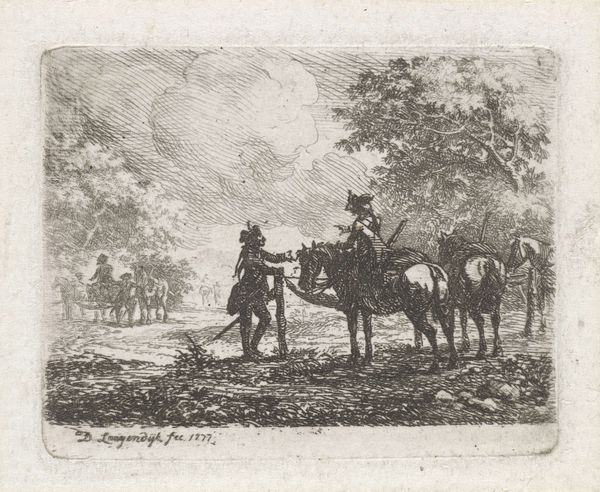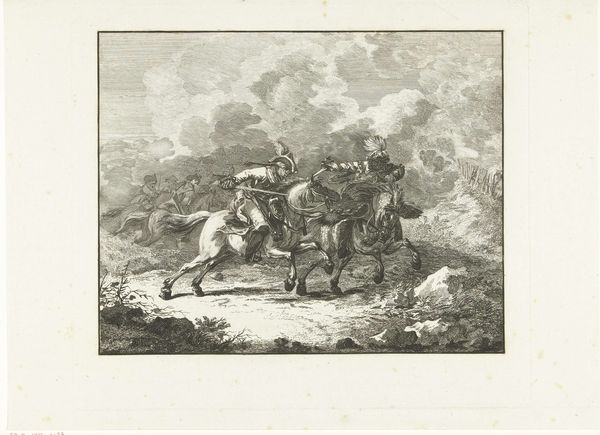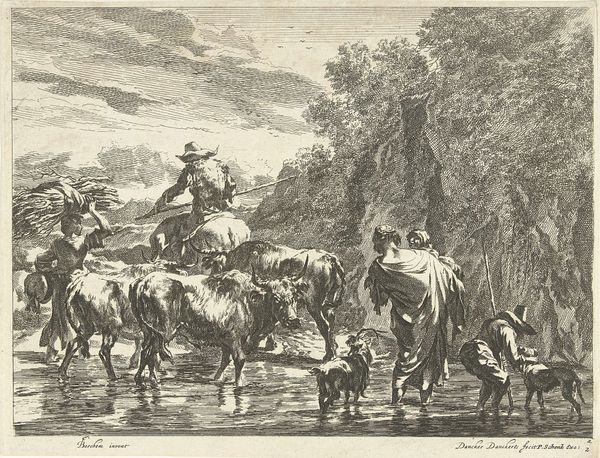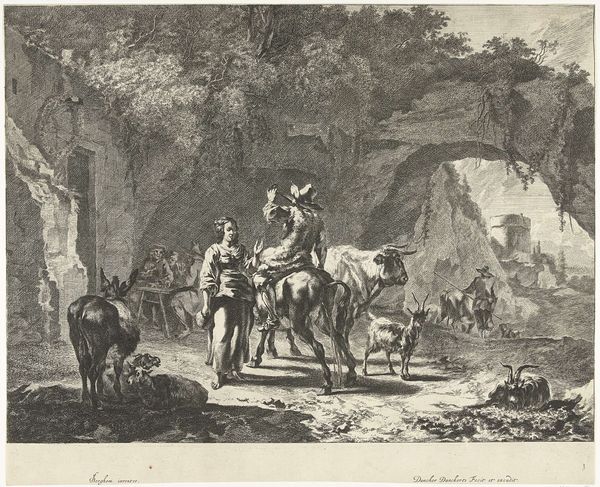
etching, engraving
#
baroque
#
etching
#
old engraving style
#
landscape
#
cityscape
#
genre-painting
#
history-painting
#
engraving
Dimensions: height 217 mm, width 293 mm
Copyright: Rijks Museum: Open Domain
Curator: Let's discuss "Herders met vee bij ruïne in berglandschap," an etching by Dancker Danckerts, created sometime between 1643 and 1666. It’s a rather detailed pastoral scene. Editor: Immediately, I notice the ruined archway. It acts like a melancholic frame, contrasting the fleeting lives of the herders with the permanence of bygone eras, now just decaying memories in the landscape. Curator: Precisely. Consider the symbolic weight of ruins during this period. They spoke to the transience of power, and the inevitable decay of empires. Seen through a contemporary lens, these ruins reflect the power structures and erasure enacted by colonizing forces worldwide. What do you think about its relation to today's social debates? Editor: A visual palimpsest indeed. What persists, what’s lost, and who gets to tell the story of the ruins – or rewrite them altogether? But the image is softened – domestic animals offer continuity, evoking cyclical narratives in society that exist beyond empires. What else stands out for you in the image? Curator: I'm intrigued by the seemingly simple depiction of the herders. Their class and presumed ethnicity can reflect hierarchical patterns across Dutch colonial endeavors at the time. The print situates the land as an idyll, but for whom, exactly? And at whose expense? Editor: A good point to consider through cultural heritage studies. Also note how the etcher directs our eye – the subtle emphasis given to specific parts through details, the placement of animals to create a sense of journey, the overall emotional direction the print conveys. Curator: Examining this etching in tandem with other landscapes from the period challenges any romanticization, urging us to look closer at these early visual documents that were both aesthetic creations, and encoded with deeply political messages. Editor: Indeed, understanding how Danckerts uses recognizable visual tropes provides another layer for contemplating continuity – how powerful ideas replicate and reimagine themselves in the world through images.
Comments
No comments
Be the first to comment and join the conversation on the ultimate creative platform.
